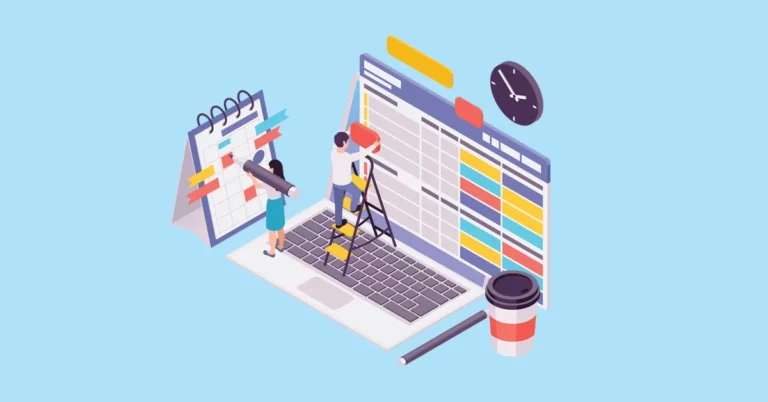Remote work is here to stay, and many organizations across the globe have started to accept and embrace this fact. It brings along countless benefits and perks that almost all employees enjoy. However, onboarding is one of those things that just works better in person, especially for the IT setup and handover, since it eliminates logistical issues and decreases communication gaps in training. Providing your employees with the proper setup is one of the most critical aspects of an onboarding process. Ensuring a smooth IT onboarding for your remote employees can be difficult, especially with laptop allocation and deliveries.
An IT onboarding is the first time a remote employee physically interacts with your organization through training modules, official emails, etc. Making sure that this interaction comes through smoothly is the responsibility of the HR and the IT teams. However, we often miss out on small details that make the process seamless.
In this post, we have created a list of reasons why this process is so important and included an IT onboarding checklist that can help you create a seamless experience.
What is IT Onboarding
IT onboarding refers to handing over IT assets to your new employees and introducing them to organizational best practices and policies. It includes guiding your employees to the right IT assets, software, and other items they may require in their roles. Additionally, training new employees on your company policies through internally made videos, courses, etc., is also a part of IT onboarding. Typically, this process includes the following.
- Choosing IT assets as per the roles: Different job profiles require different machines. For example, most software engineers are given the freedom to select a system that they feel most comfortable with. It may be a Mac, a Windows PC, or even a Linux-based system. Moreover, some roles require more than just a PC. Helping your employees choose the right assets is one of the first points of an IT onboarding checklist.
- Introducing internal softwares and processes: Every organization follows a different set of rules when it comes to internal communications. They might use different softwares for day-to-day work, and a new hire may not necessarily be familiar with them. Helping your new employees understand the technology used in your organization is one of the best ways to ensure that they blend in quickly.
- Setting up accounts: The HR and IT teams are responsible for having all new employee accounts set up well before joining. This includes email accounts, official telephone numbers (if any), internal communication accounts, etc.
- Delivering the assets on time: Ensuring that the necessary IT assets have been delivered to your new employee on time is the most crucial aspect of an IT onboarding process.
A seamless onboarding experience will quickly make your employee feel at home in their new role. But why is it so important? Let’s find out.
Why is IT Onboarding so important
An IT onboarding is that phase of hiring where a new employee experiences a new company for the first time. This is where they first interact with your company’s systems, technologies, processes, and policies. A few reasons that make it crucial are
- Morale Boost: Unboxing and setting up your new PCs and other electronics is one of the most exciting parts of joining a new company, especially for freshers. When the entire IT onboarding process is seamless at your end, a new employee’s transition into your company will be full of positivity and energy. This will directly translate to the employees working at their full potential in their new roles.
- Seamless transition into a new role: A smooth onboarding ensures that your new employees are familiarized with the kind of technology your company uses internally. During the onboarding, your new employees must be trained with the systems and softwares that they will be using on a daily basis. This ensures that new hires do not feel overwhelmed on their first day in a new job and can focus more on understanding their duties and responsibilities.
- Understanding the workflow: A new hire must be familiar with the specific workflow that your company follows. This includes everything from logging in to timesheeting, updating statuses, and logging out. A good IT onboarding must entail these details so that all new employees know these administrative processes. Along with this, employees must also be introduced to the people they can reach out to if they face any problem with their systems or accounts.
Now that the importance of an IT onboarding is evident, you must understand the challenges you may face during this event.
Challenges during IT Onboarding
Allocating assets, keeping track of deliveries, and training the employees all at the same time brings out a lot of hurdles that may result in delays. Some of the challenges faced during an IT onboarding are
- Delayed deliveries: The main challenge in an IT onboarding is ensuring timely deliveries of the assets to your new employee. Often, deliveries are delayed due to unforeseen circumstances. Lack of tracking details and clear communication can result in the employee not being informed of a delay, and without the assets, a formal onboarding process will be pushed ahead of the desired timelines.
- Incomplete information: When working with a vendor for laptop deliveries, it is common for you not to have any serial numbers or data that can help you stay informed of the kinds of assets assigned to each new employee. This may not be an issue during onboarding, it might be a problem during the offboarding process when you need to recover the assets.
- Working with international vendors: Keeping track of multiple vendors in different countries is challenging and time-consuming. Staying updated on each vendor’s stock, prices, and delivery timelines is possible, but it leaves a lot of room for errors and miscommunication. Payments to these vendors are also challenging as every country has a different currency.
These challenges can be addressed by ensuring you build a robust IT onboarding checklist and follow the best process for your organization.
How to build a smooth IT onboarding process
Building a strong IT onboarding process will help you ensure that your new employees’ transition into their roles seamlessly. Here’s a comprehensive IT onboarding checklist that will help you.
- Keep your IT team informed: The HR team must ensure that all the details of a new employee are sent to the IT team before joining. These details may include name, date of birth, location, job title, employee ID, etc. Along with these details, they must also send out a list of IT assets that a new employee will need.
- Set up the assets well in advance: The first step to this is ordering physical assets such as a PC and a mobile phone on time. Next, ensure that all the required softwares and applications are set up on the systems and a company email ID is also generated and ready to use. Most employees will require a laptop, keyboard, mouse, and cables, so make sure that these are always available to ship.
- Deliver the assets on time: Delivering the IT assets to your employees before the joining date gives them time to explore the systems and the softwares before joining. Late deliveries can make employees feel anxious and lead to delays in upcoming tasks and projects.
- Leverage async videos for training: Having 1:1 with every new employee and helping them understand the workflow can get difficult for the IT teams. This is where companies can leverage platforms such as Loom. Pre-recorded training videos such as company best practices, productivity tips, data security, emails, communication platforms, and data sharing can be very helpful for the company and the employee. Videos can also be beneficial when an employee wants to return to a specific training video.
- Extra benefits for remote employees: You can choose to help your employees with some extra benefits to build their home offices. Many organizations provide their employees with a setup allowance that helps them build their home office as per their liking. This ensures that your employees are comfortable working from home and also helps you stand out in the industry.
- Answer questions: It is normal for a new hire to have many questions about the company, the processes, and the systems. While the training may cover most of these things, you must always be open to answering any employee’s questions and queries. If you use videos and mini-courses for training your new hires, reach out to them after the sessions to understand if they have any questions or doubts.
- Ask for feedback: Feedbacks are one of the best ways to evaluate your IT onboarding process. You can do it as a survey, or you can do it personally, but having constructive feedback will only help you improve your workflow.
Onboard employees through Multiplier
Multiplier is a SaaS platform that helps businesses onboard and pay employees all over the world. Our user-friendly dashboard allows you to onboard employees in multiple countries within a few clicks and pay them compliantly.
Delivering laptops and accessories to employees in remote locations can be challenging and time-consuming. The constant to and fro between the employer and the vendor regarding multiple orders can often lead to miscommunication and delays. Moreover, tracking your IT assets can be complex if you do not have information like your product’s serial number. This can be a pain point during offboarding when the employee must return the assets.
With Multiplier, once the employment contract has been generated, you will be given the option of choosing the IT assets for your new employee. You can choose from the catalog or submit a request for specific products. Once your order has been placed and the payment has been made, the laptop and other accessories will be delivered to your employee within 7 working days.
Both you and your employee will be updated with order tracking details and updates on delivery timelines. This will help you maintain clarity on your order status and keep your new hire informed about the same. All IT assets will have dedicated serial numbers, which will be linked to your employee, which will make asset management easier during the offboarding.
Currently, Multiplier supports laptop and IT asset deliveries in over 50 countries. Laptop allocation and delivery is a crucial step during IT onboarding, and Multiplier can help you ensure that the process is flawless for you and your new employee.
Book a demo. Go global now!







